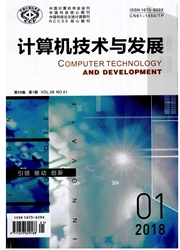

 中文摘要:
中文摘要:
应用地统计学方法和GIS分析方法研究松嫩平原作物现实生产力的空间分布格局及其影响因素。结果表明:玉米和大豆现实生产力空间变异的理论模型均为球状模型;对于玉米现实生产力而言,由随机性因素引起的空间异质性占总空间异质性的38.9%,且主要体现在5km以内的小尺度上;由空间自相关引起的空间异质性占总空间异质性的61.1%,主要体现在中尺度上。大豆现实生产力的块金值较大,占基台值的41.3%,表明对于大豆而言,人为控制因素的作用更显著;而且随机性因素引起的空间变异主要表现在10km以内;在10km以外。结构性因素是引起大豆现实生产力空间分布异质性的主导因素。玉米和大豆现实生产力的分维分析结果表明,结构性因素对玉米现实生产力的影响大于大豆,人为影响在其现实生产力的区域分异上起到了主要作用。图5,表3。参6。
 英文摘要:
英文摘要:
Geostatistics and GIS spatial analysis were used to study spatial pattern and related factors of actual crop productivity in Songnen Plain. Results showed that the semivariograms of actual productivity of maize and soybean could be exactly described by spherical models. For the actual productivity of maize, the proportion of spatial heterogeneity caused by stochastic factors were 38.9% of the total spatial beterogeneity, and was found at scale less than 5 km. However, the heterogeneity caused by spatial autocorrelation accounts 61.1% of the total heterogeneity, and was found at medium scale. As for soybean productivity, the nugget was relatively big, and accounts for 41.3% of the sill. For soybean productivity, the effects of human activities were more prominent, and the spatial variance caused by stochastic elements were found among the radius less than 10 kin. Beyond 10 km, the structural factors were the main reasons for spatial pattern. The fractal analysis showed that, the effect of structural factors on maize was bigger than that on soybean, and human activities played an important role on the regional differences of actual productivity.
 同期刊论文项目
同期刊论文项目
 同项目期刊论文
同项目期刊论文
 期刊信息
期刊信息
